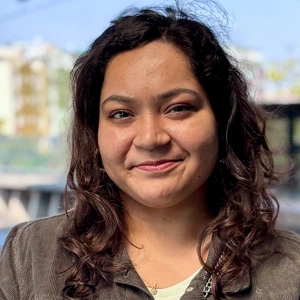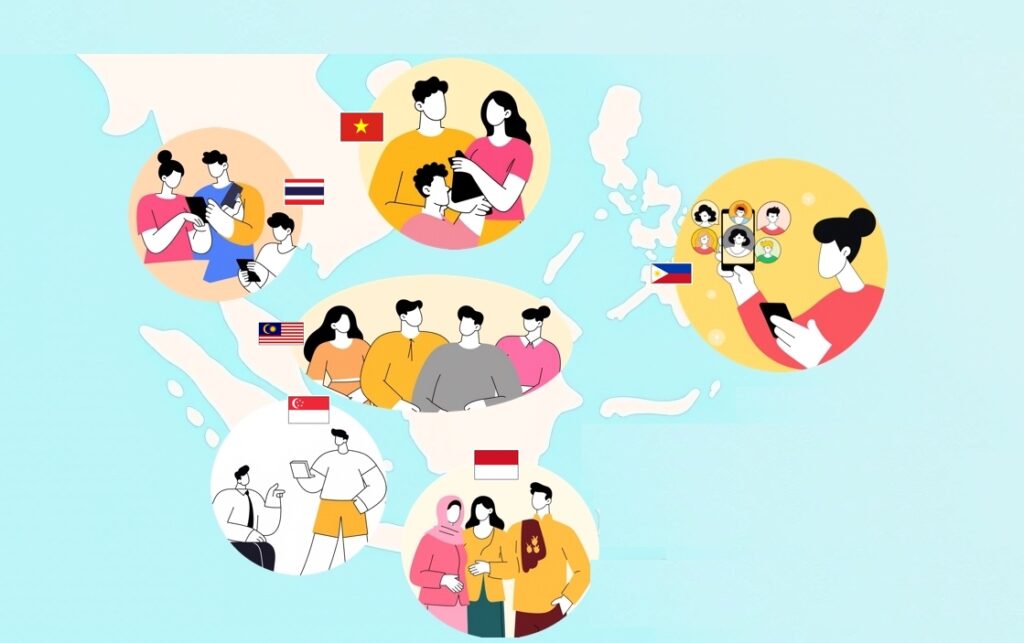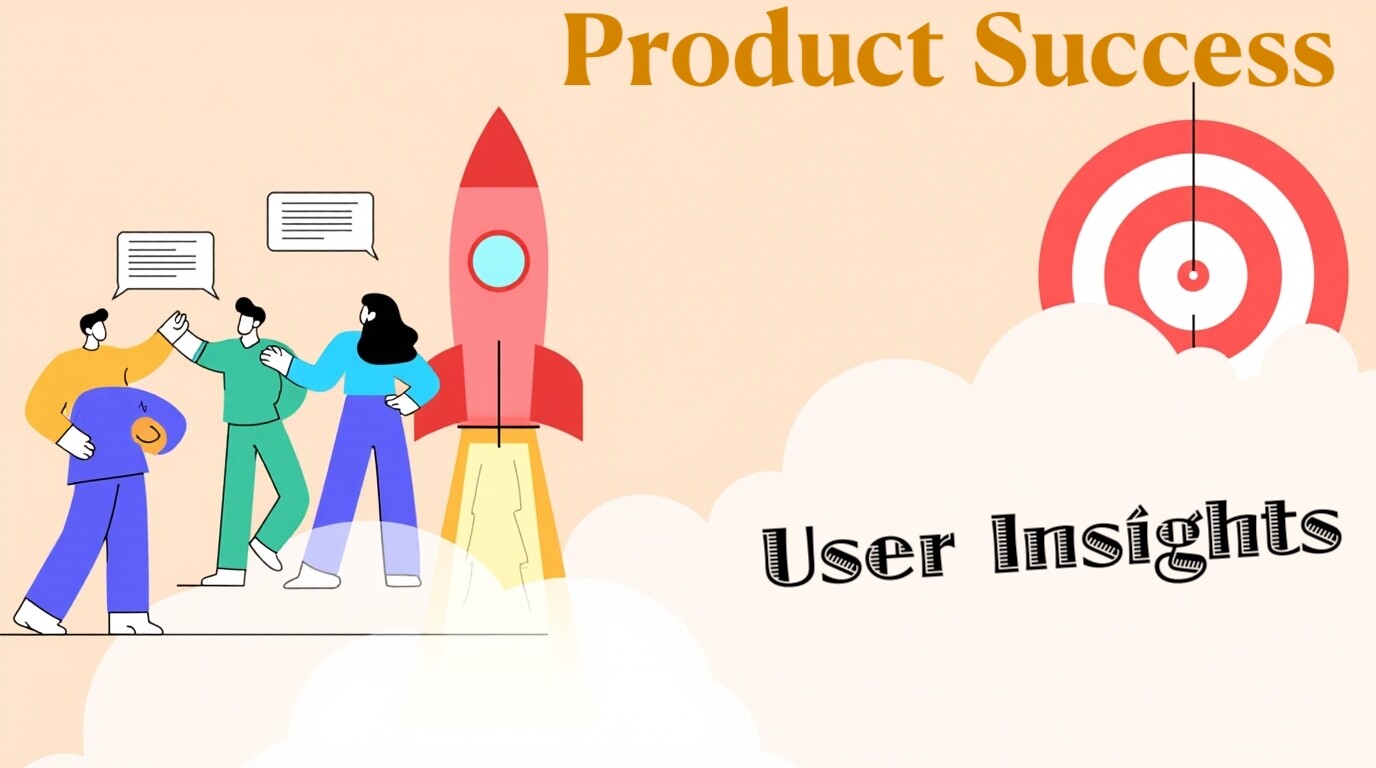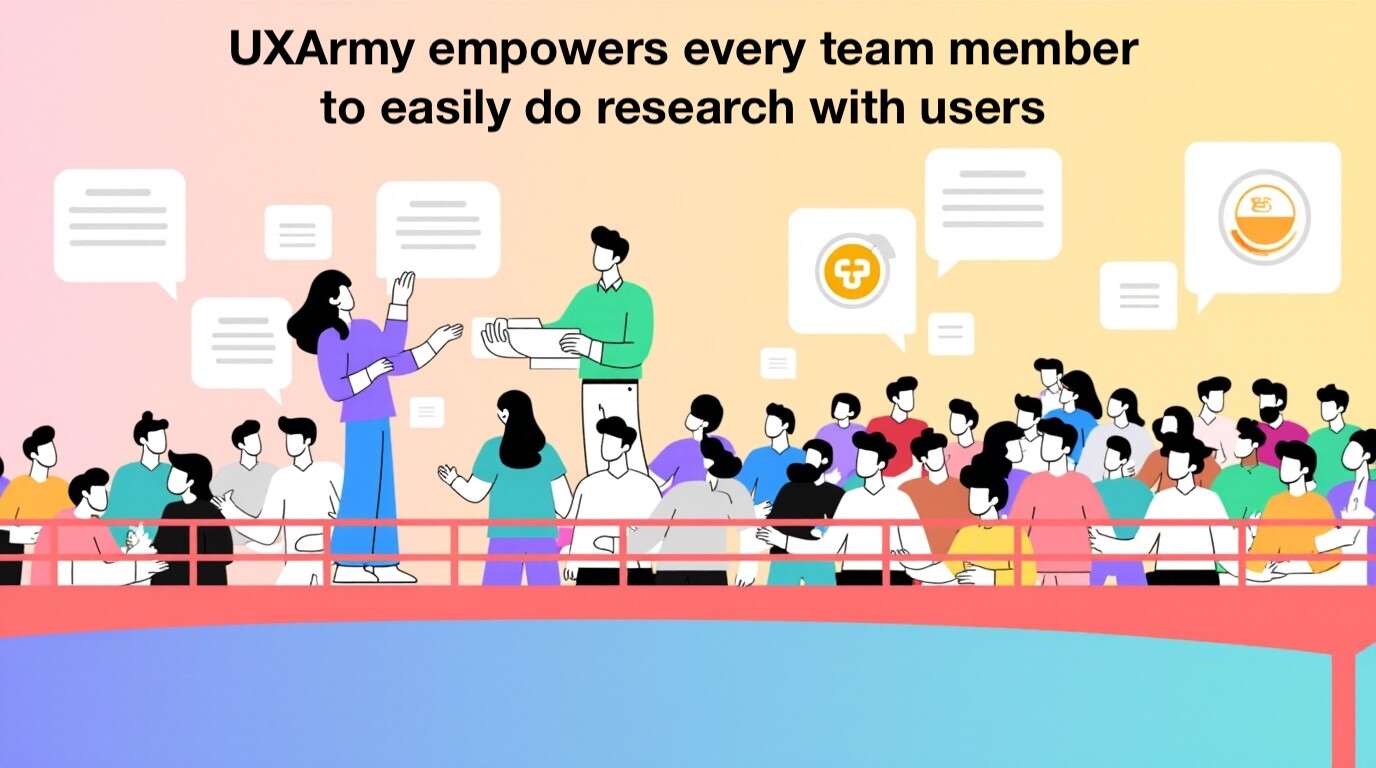Southeast Asia (SEA) region rewards teams that treat local culture as part of the research method. Here, politeness norms, code-switching, and platform habits shape how people reveal confusion and when they’re willing to disagree. If you moderate as if everyone will push back in crisp, Western-style sentences, you’ll collect reassuring nods. If you recruit as if email is king and messaging apps are optional, you’ll collect no-shows. And if you analyze transcripts without the stance markers people actually use-lah, meh, lor-you’ll miss the difference between “fine” and “I’ll live with it.”
This guide gives you a practical playbook for the region’s big research hubs which are Indonesia, Malaysia, Thailand, Singapore (in comparison Vietnam doesn’t do that much UX research), anchored on three pillars:
- Culture beneath the method – how speech habits, deference, and code-switching alter evidence
- When to use moderated vs. unmoderated research methods, and
- Fieldcraft that consistently improves user interviews and show-rates.
Where needed, this blog also weaves in economic mood (people “learning to live with less”) and media/attention habits. Cost sensitivity, platform preference, and the pace of social content all influence what participants notice, trust, and remember.
Ready to build that trust and kickstart your research?
let’s make trust the foundation of every project you work on.
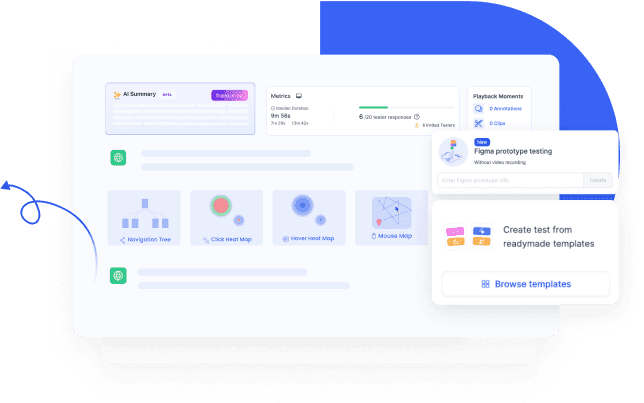
Culture is not a Foot note: it’s The Research Method
Most global “best practices” quietly assume Western habits of talk: direct critique, explicit disagreement, and minimal code-switching. That’s not the default in Southeast Asia.
- Thailand-kreng jai matters in the room. Kreng jai-a deep value around not imposing or causing discomfort-softens criticism and delays explicit “no.” Thai explainers describe it as respect and face-work in action: preserve harmony, avoid conflict, be acutely aware of your impact on others. In research, that looks like smiles, nods and perseverance through mild confusion, and only later a story that hints at a mismatch. Expect it, and design your probes accordingly.
- Indonesia-sungkan bends answers toward agreement. Sungkan is a polite reluctance to contradict or inconvenience. In sessions it produces quick agreement with researcher phrasing and indirect negatives (“maybe later”) that really mean “no.” If you rely on closed questions, you’ll think you nailed it. If you switch to participant-led playback (“walk me through what you expected”), the second answer after a pause, often tells the truth.
- Malaysia & Singapore, Code-switching and particles carry stance. In MY and SG, people slide between Bahasa Melayu/English or Mandarin-influenced English, with micro-particles like lah, meh, lor, hor. Linguists and even recent computational work, treats these not as fluff but pragmatic markers that shift meaning-tolerance vs. enthusiasm, doubt vs. assent. If your transcript “cleans them up,” you throw away the signal. Some local practitioners even argue that selective, respectful Singlish in product copy can reduce interpretive distance for local audiences. Grab an everyday ride-hailing and food delivery superapp in the Southeast region does this remarkably well. Agree or not, the lesson stands: tone affects usability.
- Vietnam-Zalo is a research rail, not a nice-to-have. If you recruit or coordinate without Zalo, you’ll lose speed and trust; it remains the country’s most-used messaging platform, outpacing global apps like WhatsApp so far. Build your reminder cadence on Zalo (plus SMS/phone backup), not email alone.
- Region-wide attention & mood. Social media is where attention lives-average daily usage in Southeast Asia is still materially higher than the global average-and people increasingly use it for inspiration and trend-spotting, not just friends/family. The content tempo raises the bar for clarity in your stimuli; if a label is vague, it gets skimmed. Meanwhile, cost-of-living concerns are high (SEA ~89%; Thailand ~95% in recent waves), which pushes participants to weigh value and necessity more explicitly in concept tests and usability trade-offs.
Bottom line: Culture shows up as how people answer, not just what they say. Make your method fit the speech and platform realities; your evidence will get sharper fast.
Tip: Do not use English for user research in Thailand, Indonesia and Vietnam if the business stakes on your research piece are high. Use local languages instead.
One Region, Many Markets
Use this small table to align leaders on recruiting, language, and device expectations.
It is not a stereotype sheet; it’s a planning tool.
| Market | Recruiting/reminders | Primary research language(s) | Device tilt |
| Indonesia (ID) | Bahasa Indonesia (with English loanwords) | Android-heavy | |
| Malaysia (MY) | WhatsApp (Telegram in tech/pro groups) | Bahasa Melayu and English (code-switch common) | Android majority; iOS meaningful in urban cohorts |
| Thailand (TH) | LINE | Thai (formal ↔ casual; politeness/power dynamics) | Android majority; iOS notable in Bangkok/affluent |
| Singapore (SG) | WhatsApp (Telegram pockets) | English; Singlish particles convey stance | Mixed iOS/Android. Test both |
| Vietnam (VN) | Zalo (SMS/phone confirm as backup) | Vietnamese; bilingual toggling in some cohorts | Android majority |
Philippines call-out: Messenger/Viber; Filipino/English; Android majority. Be wary of patchy internet connection, especially on Mobile Data.
Moderated vs. Unmoderated Research in SEA
Teams often default to method by habit – “We’ll just run an unmoderated check to save time”, then wonder why the results feel thin. In Southeast Asia, the single best selector is meaning risk: How likely is it that language, register, or politeness norms will bend the participant’s interpretation? After that it’s the proliferated usage of low-end phones (with as little as 4 GB memory) and fear of increasing online scams.
Where Unmoderated usability testing excels here
Unmoderated is terrific for simple, unambiguous tasks in the participant’s first language-first-click, basic findability, micro-copy choices where both options are native-sounding-and for post-fix confirmation after moderated sessions reveal the mechanism of failure.
Go for short tests and test iteratively. In case you want to record the participants’ screen and voice, do not expect think-aloud expertise unlike in the US, UK or AU. Participants are not used to thinking-aloud so keep reminders. Avoid unmoderated tests if it takes longer than 10 minutes to complete.
Make it robust:
- Native localization of prompts and instructions. Machine-translated oddities multiply ambiguity; invest here.
- Add a comprehension gate before each task (“In your own words, what will you try now?”). If it fails, reject the response; it’s cheaper than analyzing noise.
- Include one worked example (screenshot or 10-sec clip) for anything that could be misread.
- Keep tasks instructions short. Cognitive overhead spikes when people code-switch to interpret your instructions.
Why this fits the region’s media tempo: people in Southeast Asia spend ~3 hours/day on social platforms-meaning they skim fast and expect clarity. If your instruction or label reads like a corporate copy, they’ll glance off it.
Where moderated research / user interviews are non-negotiable
Choose user interviews when language/stance is the risk vector, when the concept is novel, or when flows hinge on words that could travel badly. It’s also mandatory for exploratory/diagnostic work-interviews, concept tests, early value-prop work.
Make moderation SEA-smart:
- Switch from “why?” to playback. Prompt with “Talk me through what you expected-step by step.” Then leave silence; in ID/TH, the post-pause answer is often the true one.
- Normalize bluntness up front. “We’re testing the design, not you; confusing bits are the gold we need.” It reduces face-work pressure (TH) and sungkan (ID).
- Mirror register without caricature. You don’t need to speak in particles, but you must hear them and reflect stance back: “Sounds like can lah-tolerable, not love. Did I hear that right?” Local linguistics and NLP work support treating particles as semantic cues.
A sequence that keeps speed without losing meaning
- 3 to 5 native-moderated sessions to surface failure modes, language traps, and politeness masking.
- Small unmoderated check (n≈30–60) in-language to confirm a specific fix.
- Follow-up moderated pass to validate the mechanism, not just a surface metric.
Multilingual Research without the Usual Traps
Trap 1 – Translating words, not intent.
A “faithful” translation can still miss register and tone. In Malaysia, overly formal Bahasa reads corporate and evasive; in Vietnam, direct calques from English feel alien. Write guides in the register participants actually use, then back-translate stimuli and notes to check what shifted. If the back-translation surprises you, your participants were doing unpaid translation for you.
Trap 2 – Assuming “English session” means English cognition.
Bilingual participants often think in L1 and formulate in L2; under load, they flip. The friction you attribute to UI could be language effort. Ask for verbatim: “What would you type/say-exact words?” Capture both L1 and L2; use them to test microcopy. (Teams in SG sometimes lean into selective, respectful Singlish to reduce interpretive distance on the right surfaces.)
Trap 3 – Treating script legibility as solved.
Thai shaping and Vietnamese diacritics break at small sizes or on some Android skins; autocorrect can strip nuance. Run a font/size stress test on mainstream Androids before fieldwork. In VN, accept accented and unaccented search; in TH, avoid icon-only for novel actions, pair with Thai labels.
Country-by-country Specifics for User Interviews
This is the section stakeholders return to. It’s not folklore; it’s patterns many User research teams, including ours at UXArmy, have learned the hard way.
Indonesia (ID): Make disagreement safe
- Moderation stance: Expect sungkan. Use third-person probes (“What would your cousin do here?”) to make dissent socially easy. Then ask for step-by-step playback and wait. The second answer-after silence-often reveals the mechanism.
- Language: Bahasa first; respect nicknames and informal address in examples/forms-rejecting them feels bureaucratic and unnecessary.
- Attention cues: Social is a primary “inspiration” channel across SEA; assume participants arrive with trend-shaped expectations and skimming habits. Give tasks that anchor attention with concrete goals.
- Scheduling reality: Jakarta traffic is real-plan 10–20-minute buffers and avoid back-to-backs across districts.
“Sungkan involves showing deference, avoiding actions that might be considered impolite…” – local explainer often cited in cultural primers. In our world, that means the first “OK” may be courtesy, not consent.
Malaysia (MY): Code-switching is data, scam-awareness shapes trust
- Moderation stance: Treat particles as meaningful metadata. “Can lah” = tolerable, not love; “meh?” = skepticism. Keep them in notes; don’t paraphrase them away. Linguistics/NLP work supports listening to particles as stance markers.
- Trust hygiene: Malaysians are rightly wary of scams; use branded WhatsApp, a named contact, a verifiable link (no shorteners), and clearly stated incentives/timing. National reporting and official responses make this caution rational, not rude.
- Recruiting tip: Ask for recent, concrete examples (“Show me your last bill payment screen” on camera) to filter pro respondents without confrontation.
Thailand (TH): Politeness is the default UI
- Moderation stance: Give explicit permission to be blunt at the start. Use episodic probes: “Right after you tapped X, what did you expect next?” When you see a nod + micro-pause, probe gently; that often signals deference, not assent.
- Language & UI: Pair icons with Thai labels for novel or high-risk actions; typography that looks elegant in English can collapse legibility in Thai-test on real screens.
- Attention cues: Thai audiences, like their SEA neighbors, use social media both to keep in touch and to find what’s trending; if your concept depends on a trend, expect sharper, opinionated comparisons.
Singapore (SG): English-first, but hear the particles
- Moderation stance: Invite verbatim phrasing (“What would you actually type/say?”). Formal English ≠ comprehension. Local work treats lah, meh, hor as pragmatic markers; hearing them will keep you honest about stance.
- B2B tip: Quick SSO/VPN checks before sessions. If SSO friction appears, treat it as part of the finding, not a nuisance.
- Media habit: Social penetration is extremely high; participants skim fast. Use plain English in stimuli and avoid “global-sounding” abstraction that reads as corporate
Vietnam (VN): Recruit on Zalo, respect register
- Moderation stance: Adjust directness by age/region; mirror participant register without slipping into caricature. Ask, “If you told a friend about this, what words would you use-in Vietnamese?”
- Language: Design tasks and communication in local language and use a local moderator to tolerate diacritics and unaccented inputs; autocorrect can strip tone marks and change meaning. Most users in HCMC and professionals in Da Nang are tech-savvy.
- Scheduling & comms: Hanoi/HCMC traffic is unpredictable; build buffers and coordinate on Zalo for faster replies and higher trust. Evidence consistently places Zalo at or near saturation nationwide.
Philippines note for schedulers: Messenger/Viber reminders outperform email; Metro Manila traffic justifies longer buffers; intermittent connectivity warrants a dial-in fallback.
Grounded Behavior Shifts Your Stimuli and Analysis
Beyond language, what people pay attention to and how thrifty they feel shapes research outcomes.
- Content tastes and tempo. Large-scale studies in SEA show people reach first for entertainment/celebrity, sports, and food categories when browsing news, with device preference split across PC and mobile-an unusual pattern compared with “mobile-only” stereotypes. This means: don’t assume “mobile solves all,” and when you test headlines/tiles, borrow pacing from entertainment formats (clear, concrete, scannable).
- Gen Z is search-first in SEA. Regional studies report heavy daily use of Google/YouTube-for discovery and evaluation, not just answers. In the Philippines, the daily figure for Gen Z is strikingly high. Design research tasks (and product surfaces) that acknowledge search as a habit, not a last resort.
- Cost-of-living mindset. EY’s 2024 index reports very high concern about rising costs across Southeast Asia (with Thailand peaking, Malaysia and Indonesia following closely); people “learn to live with less,” trading down, deferring, or cutting non-essentials. In research, expect more pointed questions about value and necessity. For concept/usability tasks, be explicit about cost & time trade-offs; vague “nice to have” value props will underperform.
- Social as inspiration (and scrutiny). SEA users spend ~3 hours/day on social and use it above global averages for finding trends/inspiration. In interviews, this shows up as side-by-side comparisons with what “people are using now.” If you hear “my friends say…” treat it as a legitimate comparative frame, not bias; probe it. If you want
Research Recruiting & Scheduling
Great moderation can’t overcome no-shows or rushed openings. Treat logistics as part of data quality.
- Cadence that fits daily life. T-24h confirm => T-2h “see you soon” => T-15m “we’re ready,” sent via the dominant messenger (WhatsApp in ID/MY/SG, LINE in TH, Zalo in VN). Keep messages in the participant’s first language in Thailand, Indonesia and Vietnam (specifically for older participants). Specifically in Malaysia, make sure that you call the participant on the day of the interview. This gives them the confidence that the invitation is confirmed.
- Venue as a research tool. In Singapore, pick locations near Public transport (MRT); convenience empirically lifts senior show-rates. Let the small geographical size of the city-state not deceive you. Interview venues can be considered far off, especially when in the East / West / North / North-East townships of Singapore.
- Trust-first copy in MY (and VN). Use branded profiles, named contacts, a verifiable link, and no shorteners. Be explicit that you’ll never ask for OTPs/passwords; scam awareness is legitimately high.
- Plan for partials. In Jakarta, Bangkok, Hanoi/HCMC (and Manila), traffic happens. Your guide should still yield core evidence in 30 minutes if someone arrives late.
Consent and Privacy: Keep it local and Auditable
You don’t need a 40-page memo; you need plain-language consent in the participant’s first language, clear statements about recording and storage, and a timestamped artifact.
| Market | What participants expect | Consent language tip | Storage habit |
| ID | Purpose, recording, who sees it | Bahasa first; name recording & retention | Capture verbal consent on tape; keep a one-pager |
| MY | Trust cues; explicit “no OTP/password” | BM/EN versions; plain speech over legalese | Keep consent logs; avoid exposing real PII in tasks |
| TH | Transparent purpose & transfer | Thai consent in neutral tone | State deletion route; store securely |
| SG | Plain English; clarity beats legalese | Short, explicit recording/retention | Maintain auditable records |
| VN | Vietnamese first; clarity over formality | Name recording and who will view it | Keep purpose-specific consent artifacts |
Two habits do most of the work: say the recording and storage location aloud in the participant’s language and save verbal consent with a timestamp. Participants relax; Legal stops worrying.
Putting all of it to Work in SEA
If you change nothing else, change these four things:
- Choose by meaning risk. If language and politeness can bend meaning, start moderated; use unmoderated for narrow, unambiguous checks after you de-risk the words.
- Pilot in-language. Ten minutes with one participant catches register mismatches that potentially can poison a day of sessions.
- Moderate for politeness. Use playback probes, allow silence, and give explicit permission to be blunt-especially in TH and ID.
- Keep stance markers in your data. Singlish/Manglish particles, softened negatives, third-person stories-these are evidence, not noise. Quote them, and your microcopy will improve.
Why does this work? People in SEA are attention-rich on social but budget-constrained in life; they search actively, skim fast, and weigh value carefully. If your method respects how they speak and where they live online, your research will stop reading like a ceremony and start acting like clarity your teams can ship with.Great research here isn’t exotic.
It’s disciplined about language and stance, honest about politeness and power distance, and practical about scheduling and trust. Use native moderation. Keep particles and code-switching in your data. Pilot in-language. Choose moderated when meaning can bend; use unmoderated for simple, unambiguous checks-after you’ve de-risked the words. Do those few things and your work will feel less like ceremony and more like clarity your teams can ship with.
Experience the power of UXArmy
Join countless professionals in simplifying your user research process and delivering results that matter
Frequently asked questions
Why avoid focus groups in Southeast Asia when using user research tools?
Because countries like Malaysia are highly collectivistic, participants may conform to group opinions rather than sharing genuine insights. Remote usability testing software and user research platforms need to favor one-on-one methods to avoid herd mentality and surface authentic responses.
How do local language nuances affect UX research tools like user surveys?
Everyday code-switching and slang (e.g., Malay “tapau”, Indonesian “gaptek”) may be missed or misinterpreted by non-native researchers. Usability tools, user research software, and user research survey templates should allow free text input and be used by local researchers to capture true user meaning.
What recruitment strategies optimize usability testing platforms in SEA?
Avoid relying on reward-driven recruitment leading to pseudo-qualified participants. User testing platforms or remote user testing tools should frame recruitment messages around purpose and community benefit to attract genuine respondents.
How do mobile and online testing tools adapt to punctuality norms in SEA?
In regions where “Malaysian time” reflects flexible scheduling due to traffic and low uncertainty avoidance, remote usability testing software and online UX testing platforms should include generous buffers between sessions and flexible scheduling options.
Why are local UX research tools and services essential in Southeast Asia?
Collectivistic cultures may lead participants to provide socially acceptable answers. Local UX research services, UX research platforms, or user research services powered by on-ground researchers help probe deeper, countering shallow insights through nuanced cultural understanding.
What design localisation considerations should UX testing tools incorporate?
Localisation isn’t just translation—text length variations, script differences, color associations, and religious sensitivities (e.g., avoiding dog imagery in Indonesia, using green for Islamic resonance) must be incorporated. Platforms like a user research platform or UX research software should account for these to ensure UX resonates regionally.
How do visual design preferences differ between Western and Southeast Asian UX?
Unlike the minimalist Western style, Southeast Asian interfaces often favor maximalism—dense, vibrant visuals reassure users of value. UI creation tools and usability tools should support rich layouts to match local expectations.
When should I choose moderated vs. unmoderated testing in SEA?
Use moderated when language/stance can bend meaning-e.g., Thai kreng jai (politeness), Indonesian sungkan (reluctance to contradict), or when sessions involve code-switching (Manglish/Singlish) or novel concepts. A native moderator can rephrase probes in-flight and read the pauses that matter. Use unmoderated for simple, unambiguous tasks that are already localized in the participant’s first language (first-click, basic findability, tiny copy choices), or as a post-fix check after moderated work surfaces the failure mode. A reliable cadence is: 3–5 native-moderated sessions => small in-language unmoderated confirmation => one follow-up moderated pass to verify the mechanism.






